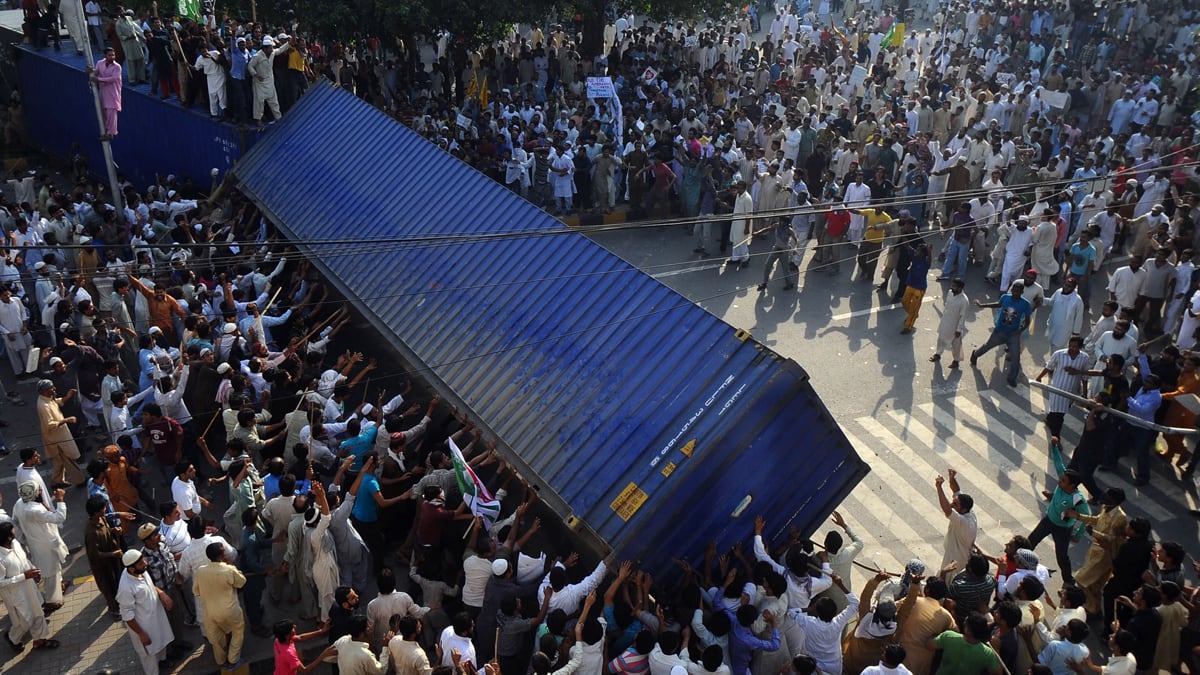It started with a trickle. At 2:30 p.m., about 30 minutes after Friday prayers ended in mosques across Lahore, a few people on motorcycles showed up and started shouting “Death to America” outside our offices. This wasn’t surprising. Hours earlier, the police had informed us that those demonstrating against an anti-Islam film, which has sparked an international uproar, would congregate nearby. After all, it was “Love of Prophet Day,” a national holiday announced by the Pakistani government specifically to protest the low-budget film, Innocence of Muslims.

Housed less than a mile from the Lahore offices of the U.S. Consulate, Newsweek Pakistan is no stranger to protests. When Punjab Gov. Salmaan Taseer was assassinated last January, an enraged mob nearly destroyed my car. And when Navy SEALs killed Osama bin Laden last May, the road outside was blocked for over an hour with protesters demanding that Islamabad cut off all ties with Washington.
But this was different. The trickle quickly became a torrent as protesters, many wearing black armbands and wielding sticks, started to assemble in front of large metal containers that the police had used to block the road leading to the U.S. Consulate. Initially, the protests were peaceful. Sure, there were occasional shouts of “Allah-o-Akbar” and more than one banner declaring someone’s intention to give their life for the Prophet of Islam. But neither was something to be concerned about. Or so we told ourselves as the crowd of mostly right-wing Islamists started to swell. We were far more concerned about reports that movie theaters in various parts of the country had been set on fire; a peaceful protest wasn’t news, even if it was right outside our office.
Then the first container was pushed, and the police started running for cover. I was taking pictures from the roof at the time. The protesters pushed forward. The police reacted by firing tear-gas canisters. The wind carried the fumes upward. My eyes stinging, I ran downstairs to our office on the fourth floor and tried to take pictures from the window. That’s when I heard the sound. Crack! One of the protesters had thrown a rock at us. The window had cracked. Soon other rioters grabbed rocks and started throwing them at us, breaking windows on the first and second floors of our building. The gates barely held as people tried to break through. Trying to take pictures while staying out of the line of fire, my colleagues and I crouched on the floor and held our cameras up by the window, snapping photos blindly, hoping they’d come out OK.
Of course, we weren’t the only ones under siege. Protesters had taken to the streets in Pakistan’s capital, Islamabad; Karachi, the country’s economic hub; and several major cities, including Multan, the hometown of ousted prime minister Yousaf Raza Gilani. Local news channels showed harrowing footage of policemen being hauled off on stretchers (though to be fair, some of the protesters were hauled off on stretchers, too).
As the hours wore on, and the crowd swelled to more than 1,000 people—each seemingly bent on reaching the U.S. Consulate behind our office—the tear gas, which had initially discouraged the protesters, soon became counterproductive. Every time a canister was fired, one of the protesters would rush out to grab it and fling it back; the police were forced to retreat. Eventually they resorted to slinging rocks back at the protesters to keep them at bay. But the crowds kept advancing—finally reaching stone-throwing distance of the consulate.
Soon, however, police reinforcements arrived from other parts of the city, and they used their riot gear and batons to keep the protesters under control. By nightfall, the demonstrations lost steam. A few scattered individuals persisted, but most seemed happy with the day’s work. They headed home. For those of us on the receiving end, however, the night had just begun.




